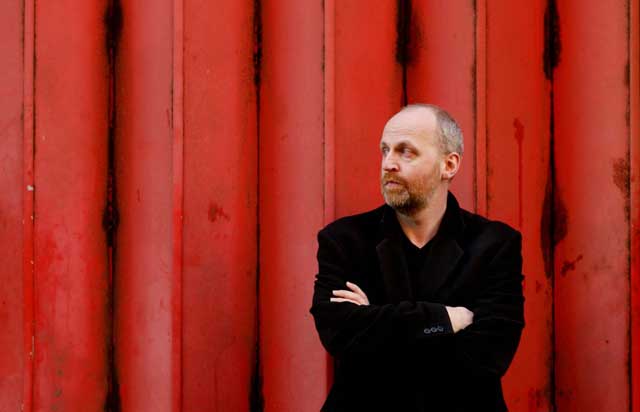Reading Shakespeare's Sonnets, By Don Paterson

Your support helps us to tell the story
From reproductive rights to climate change to Big Tech, The Independent is on the ground when the story is developing. Whether it's investigating the financials of Elon Musk's pro-Trump PAC or producing our latest documentary, 'The A Word', which shines a light on the American women fighting for reproductive rights, we know how important it is to parse out the facts from the messaging.
At such a critical moment in US history, we need reporters on the ground. Your donation allows us to keep sending journalists to speak to both sides of the story.
The Independent is trusted by Americans across the entire political spectrum. And unlike many other quality news outlets, we choose not to lock Americans out of our reporting and analysis with paywalls. We believe quality journalism should be available to everyone, paid for by those who can afford it.
Your support makes all the difference.This is not a conventional work of criticism and is all the better for it. Indeed, so far does it depart from the norms of academia that at times it is unclear whether Paterson is writing about Shakespeare or Shakespeare about Don Paterson. As the introduction declares, "reading a Shakespeare sonnet is an act of authorship".
But then any critic starts with a surprisingly empty canvas, given we know so little about the Sonnets. They could have been written at any time between 1582 and 1609, probably in the 1590s. The first 126 address an unknown young man (or YM, as Paterson refers to him) as the object of both the poet's interest and affection. Then the Dark Lady (DL) enters the scene and the last 28 sonnets include her in a more complicated ménage à trois. All save two of the sequence were unpublished before 1609 when a Quarto was produced with no clear dedicatee other than a mysterious Mr WH, and with two (possibly identifying?) lines excised from the final sonnet addressed to the YM.
This diffidence about naming the Young Man is usually interpreted as discreet deference for a presumed aristocratic sponsor. Although as a player-manager, Shakespeare knew how to beat the drum for his works. As a publishing ploy it may have been as successful in enticing interest then as it is now. Few critics also dare to suggest the obvious - that a poet of Shakespeare's unbridled imagination was quite capable of having invented his entire cast.
Most books about the Sonnets take two approaches: they either treat the sequence as a roman à clef and try to identify the YM and DL. The late AL Rowse spun this out over several volumes. Or they get out the concordance and try to exert leverage on every last couplet by placing them in literary context. Neither approach quite satisfies.
Paterson describes his own approach as "diving headlong into the pit". He keeps a loose diary while reading a sonnet a day, so that we get largely unmediated reactions, together with the poems themselves.
He takes a brisk approach to the Young Man problem. Of course, Shakespeare had a sexual relationship with him and was bisexual; no, it doesn't particularly matter who the YM was. What Paterson is really concerned with - and where the book soars above the competition - is how the poems work; how Shakespeare uses and abuses the sonnet form to achieve his effects.
Given that Paterson is one of the finest living poets working in the sonnet form, he brings to this a craftsman's insight and refreshing candour. Writers from Ben Jonson to Philip Larkin have been suspicious of bardolatry, and Paterson is no exception. Where the Master is clearly treading water, he's not afraid to say so, describing one meretricious sonnet as a "turkey".
But if you let Shakespeare write Shakespeare for long enough you're bound to get some masterpieces. Paterson dissects them with clinical thoroughness and a lot of backchat to the nurses; it is not often that the readers of a work of criticism are referred to as "my chickens".
Nor does he always choose the most anthologised to praise. Both "Let me not to the marriage of true minds" and "My mistress' eyes are nothing like the sun" are batted away as formulaically Platonic and misogynistic respectively. A sonnet like "That time of year though mayst in me behold" he fillets with great tenderness. Where Shakespeare has revised his own work - as with the only two of the poems he published twice - Paterson can show why he might have made those changes.
He is also unusually acute about the physiological effect of poetry – how our dopamine receptors react to stimuli. That is appropriate for a work where the poet often seems flooded by emotions he battles to rationalise.
Above all, his approach allows for a narrative development within the sonnets, plotting the complicated emotional chess moves that develop between the characters: YM to DL; Check; Poet retreats. Some have found the mix of stern poetics and Oprah Winfrey inclusiveness disconcerting. When we get to the final sonnet, 154, Paterson exclaims: "Group hug!" But the great merit of this book – and where it differs from so much academic literary criticism - is that, however eccentric it may occasionally be, it is never dull and frequently brilliant.
Join our commenting forum
Join thought-provoking conversations, follow other Independent readers and see their replies
Comments